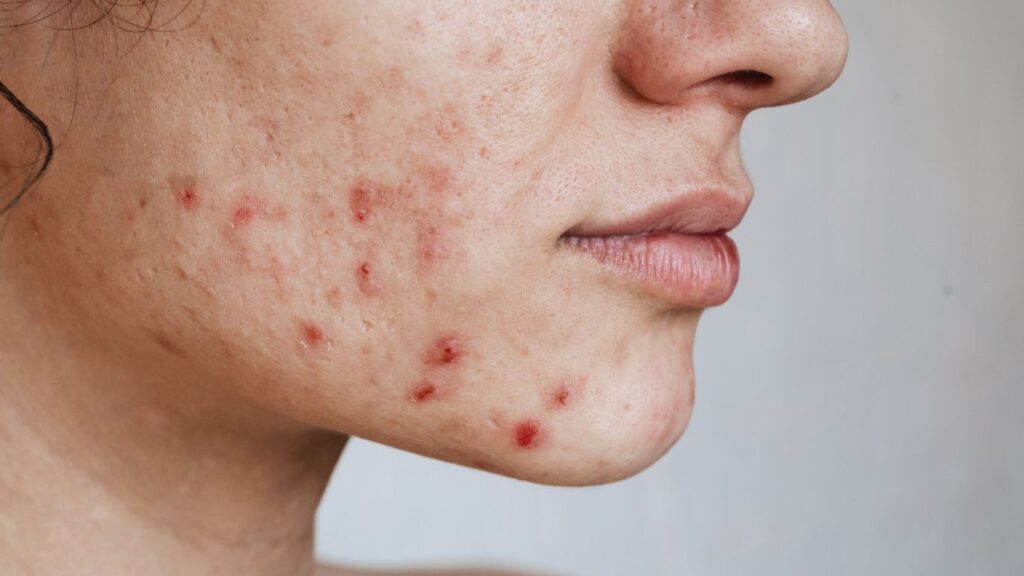Understanding Scar Lymphedema: Symptoms, Causes, and Stages of Fibrosis
Definition of Lymphedema
Lymphedema is a chronic condition characterized by the abnormal accumulation of lymphatic fluid in the tissues, leading to swelling, especially in the limbs. This occurs when the lymphatic system—responsible for draining lymph fluid from the body—is impaired. Often resulting from damage to the lymph nodes or lymphatic vessels, lymphedema can be a direct consequence of treatments like surgery or radiation, particularly after cancer treatments. Secondary lymphedema, which develops after an injury or illness, is more commonly seen than primary lymphedema, which is a genetic condition that affects lymphatic development from birth.
Overview of Scars and Their Formation
A scar is a mark left on the skin or other tissues after a wound has healed. It forms as a result of the body’s natural healing process, where collagen and other fibrous tissue are laid down to repair the damage caused by an injury, surgery, or inflammation. The scar tissue that forms can be thick, raised, or in some cases, it may be flat and barely noticeable. Scars can occur on any part of the body but can become more pronounced when the skin has been stretched or affected by internal conditions like lymphedema.
Importance of Understanding the Relationship Between Lymphedema and Scars
Understanding how lymphedema interacts with scars is crucial for both patients and healthcare providers. Scar tissue can impede the lymphatic system’s function, further exacerbating the swelling and complications of lymphedema. Scar tissue, in particular, can cause fibrosis or tissue hardening, which obstructs the normal flow of lymph fluid. This relationship between lymphedema and scars is significant because proper management of scars in lymphedema patients can help minimize swelling and reduce the risk of further complications like infections and fibrosis.
Understanding Lymphedema
Causes and Risk Factors
Lymphedema can occur due to a variety of factors, including cancer treatments (especially those that involve the removal or radiation of lymph nodes), surgery, infections, or trauma. Cancer treatments, such as breast cancer treatment, can result in lymphedema because they often involve the removal of lymph nodes in the affected area, which obstructs the normal flow of lymph fluid. Additionally, radiation therapy can damage the lymphatic vessels, leading to lymphatic obstruction and swelling.
Risk factors for developing lymphedema include a history of cancer treatment, obesity, infections that affect the lymphatic system, and injury to the lymph nodes. Lymphedema is more likely to develop in individuals who have undergone extensive surgical procedures, particularly those involving the removal of lymphatic tissue or the destruction of lymph nodes.
Symptoms and Diagnosis
The symptoms of lymphedema typically include swelling, a feeling of heaviness or tightness in the affected limb, limited range of motion, and, in some cases, pain or discomfort. The condition often begins slowly, with mild swelling that can become more severe over time. In the early stages, swelling may be intermittent, but as lymphedema progresses, it can become more persistent and affect daily activities.
Lymphedema is diagnosed through a combination of physical exams, patient history, and diagnostic tests, such as lymphoscintigraphy, ultrasound, or MRI. It is important to identify the condition early, as early intervention can help prevent the progression of lymphedema and reduce the risk of complications.
Impact on Daily Life and Physical Health
Lymphedema can have a profound impact on an individual’s daily life. The swelling can interfere with basic tasks such as walking, dressing, and exercising. Over time, if left untreated, lymphedema can lead to further complications like fibrosis (the thickening and scarring of tissue), cellulitis (a skin infection), and decreased mobility. The psychological impact of lymphedema can be just as significant as the physical effects, leading to anxiety, depression, and body image issues.
Furthermore, individuals with lymphedema may experience reduced quality of life due to ongoing swelling, discomfort, and restrictions in their ability to participate in physical activities or work. Managing lymphedema requires ongoing treatment, including compression therapy, manual lymphatic drainage, and lifestyle changes to maintain optimal health.
The Formation of Scars
Types of Scars and Their Characteristics
Scars can vary greatly in appearance, and their formation depends on a number of factors, including the size and location of the injury, the type of tissue affected, and the individual’s healing process. The most common types of scars include:
- Hypertrophic Scars: These scars are raised and thickened, often red or purple in color. They typically develop in response to an injury where the body produces excessive collagen.
- Keloid Scars: Keloids are raised, thick scars that extend beyond the boundaries of the original wound. They are often more prominent in individuals with darker skin.
- Atrophic Scars: These are sunken scars that occur when the skin loses tissue during the healing process. Atrophic scars are often seen in conditions like acne or chickenpox.
- Contracture Scars: Contractures occur when the skin tightens and shortens, usually after a burn or severe injury. These scars can restrict movement and impair the function of the affected area.
Factors Influencing Scar Formation
Several factors can influence the formation of scars, including genetics, the severity of the injury, and the area of the body involved. The body’s ability to produce collagen and heal tissue can vary, leading to different types of scars. For example, people with a genetic predisposition to keloid scarring may develop larger, more prominent scars after surgery or injury. Additionally, factors like infection, tension on the wound, and delayed healing can increase the likelihood of abnormal scar formation.
In the context of lymphedema, the presence of fibrosis and swelling can alter the normal healing process, contributing to more significant scar tissue formation. Scar tissue can also affect the lymphatic vessels in the area, impeding lymphatic circulation and making it more difficult for the body to manage lymph fluid effectively.
The Healing Process and Its Implications for Lymphedema Patients
The healing process of scars involves several stages: inflammation, tissue formation, and remodeling. During the inflammatory stage, the body sends white blood cells to the site of the injury to fight infection and begin the repair process. In the tissue formation stage, collagen and other tissue fibers are deposited to close the wound. Finally, during the remodeling phase, the scar tissue matures and becomes stronger.
For patients with lymphedema, this healing process can be complicated. Scar tissue, especially in the affected limbs, can restrict lymphatic vessels and impede lymphatic drainage. The result is poor circulation of lymph fluid, which can worsen swelling, inflammation, and fibrosis. This cycle can lead to further complications, making it crucial to manage both the scar tissue and the underlying lymphedema effectively.
The Connection Between Lymphedema and Scars
How Lymphedema Can Affect Scar Healing
Lymphedema can affect scar healing by slowing down the body’s ability to properly heal the wound. The chronic swelling caused by lymphedema can disrupt normal tissue regeneration and lead to the development of more fibrotic (thickened) tissue. This fibrosis can cause scars to become more pronounced, more difficult to manage, and more likely to obstruct lymphatic drainage.
In particular, scar tissue that forms near the lymphatic vessels can block lymphatic flow, resulting in fluid retention and worsening the symptoms of lymphedema. This creates a vicious cycle where poor lymphatic circulation hinders the healing of both the scar and the lymphedema.
The Role of Scars in Exacerbating Lymphedema Symptoms
Scars can exacerbate lymphedema symptoms in several ways. First, they can physically obstruct the lymphatic vessels, preventing lymph fluid from draining properly. This can result in increased swelling and fluid retention in the affected limb. Second, scar tissue can restrict movement and flexibility, which can further limit the ability to perform the lymphatic drainage techniques necessary to manage lymphedema.
As the body’s lymphatic system struggles to drain fluid effectively, individuals may experience worsening symptoms, including more frequent flare-ups, increased discomfort, and a greater risk of complications like cellulitis or skin infections.
Strategies for Managing Scars in Lymphedema Patients
Managing scars in lymphedema patients requires a multi-faceted approach that includes both traditional scar treatment and specific strategies for improving lymphatic drainage. Here are a few effective strategies:
- Scar Massage: Gentle massage techniques can help break down scar tissue and improve circulation in the affected area. Manual lymphatic drainage (MLD) massage, when performed by a trained therapist, can also help move lymph fluid and reduce swelling.
- Compression Therapy: Compression garments, such as sleeves or stockings, can help reduce swelling in the affected area and support the healing process of scars. Compression helps maintain proper lymphatic drainage, preventing the buildup of fluid around scar tissue.
- Surgical Treatment: In some cases, surgical interventions such as lymph node transfer or tissue resection may be required to improve lymphatic flow and remove fibrotic tissue. These surgeries can help restore function and reduce the progression of lymphedema.
- Scar Therapy: Specialized treatments like silicone gel sheets, which help flatten scars, or corticosteroid injections may be used to improve the appearance and flexibility of scar tissue.
Conclusion
Recap of the Relationship Between Lymphedema and Scars
Lymphedema and scars are closely related, as scar tissue can obstruct lymphatic flow and exacerbate the symptoms of lymphedema. The development of scar tissue, particularly around lymphatic vessels, can result in fibrosis, swelling, and difficulty in managing lymph fluid. Understanding how lymphedema and scars interact is critical for developing effective treatment strategies that address both the physical and functional aspects of the condition.
FAQs
Q: What is lymphedema and how does it relate to scars?
A: Lymphedema is a condition characterized by the accumulation of lymph fluid, typically in the extremities, due to damage or dysfunction in the lymphatic system. Scars can affect lymph drainage and may lead to the development of lymphedema and fibrosis, particularly if the scar tissue impacts lymph vessels or the surrounding soft tissue.
Q: What are the symptoms and causes of lymphedema?
A: Symptoms of lymphedema include swelling in the affected area, heaviness or tightness, restricted range of motion, and recurrent infections. The causes can vary, but they often include surgical removal of lymph nodes, radiation treatment, or trauma that disrupts lymph drainage.
Q: How is lymphedema diagnosed?
A: Lymphedema is diagnosed through clinical evaluation by a healthcare professional who assesses the patient’s history and physical symptoms. Imaging studies may also be used to evaluate lymph vessels and to understand the extent of lymph stasis.
Q: What is the treatment of lymphedema?
A: The treatment of lymphedema typically involves a combination of manual lymph drainage, compression therapy, exercise, skin care, and education on self-management techniques. In some cases, surgical treatment may be considered to improve lymphatic function.
Q: Can lymphedema be prevented?
A: While not all cases of lymphedema can be prevented, certain measures can reduce the risk, especially for those at high risk. Lymphedema prevention strategies include maintaining a healthy weight, exercising regularly, and avoiding injuries to the affected area.
Q: What role does the scar matrix play in lymphedema?
A: The scar matrix can significantly affect the ability to move and may contribute to the progression of fibrosis. If scar tissue forms in a way that restricts lymph flow, it can lead to the development of lymphedema, particularly in the extremities.
Q: What are the stages of lymphedema?
A: Lymphedema is generally classified into stages. Stage 1 is characterized by reversible swelling, while Stage 2 involves persistent swelling that does not return to normal. Stage 3, also known as lymphostatic elephantiasis, involves severe swelling and changes in skin texture and appearance.
Q: How does radiation treatment affect lymphedema?
A: Radiation treatment can damage lymph vessels and disrupt lymph drainage, increasing the risk of developing lymphedema. This can also lead to surgical and lymphatic fibrosis, further complicating the management of lymphedema.
Q: What are some techniques for treating lymphedema?
A: Treating lymphedema often involves a combination of therapies, including manual lymph drainage, compression garments, exercise to promote lymph flow, and education on self-care strategies to manage symptoms and improve quality of life.
Q: How does lymphedema affect the ability to perform daily activities?
A: Lymphedema can affect the ability to perform daily activities by causing discomfort, restricting movement, and leading to fatigue. Managing symptoms through appropriate lymphedema treatment can help improve functionality and quality of life.





